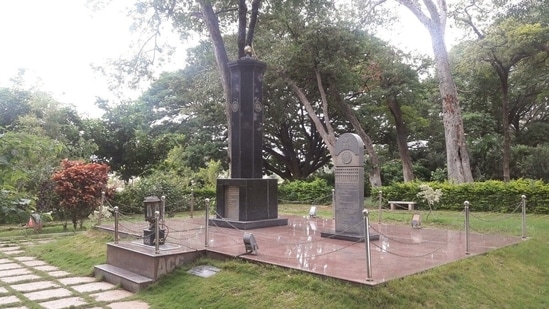Vidurashwatha Massacre, the Forgotten Jallianwala Bagh of South India
Due to its resemblance to the massacre at Jallianwala Bagh in 1919, Vidurashwatha later came to be known as the Jallianwala Bagh of the South. Decades later, the village is now a forgotten chapter in the history of the country’s freedom struggle.
The year was 1938 and India’s freedom struggle was at its peak. On the morning of April 25, a group of villages led by leaders of the Indian National Congress (INC) had gathered at an open ground in Vidurashwatha village, close to the now Karnataka-Andhra Pradesh border, in Chikkballapur district, to hoist the national flag. Defying prohibitory orders, just as they were proceeding to hoist the flag, police opened fire, killing 32 people and injuring more than 100 others. At least 90 rounds of ammunition was fired by the police that morning.

Due to its resemblance to the massacre at Jallianwala Bagh in 1919, Vidurashwatha later came to be known as the Jallianwala Bagh of the South. Decades later, the village is now a forgotten chapter in the history of the country’s freedom struggle.
Gangadhara Murthy, a retired professor and author of a book ‘The forgotten Jallianwala Bagh of South India’ said the firing led to the Mirza-Patel pact, an agreement between then Diwan of Mysore Mirza Ismail and Indian statesman Vallabhbhai Patel, which resulted in the formation of the first government with the participation of the people in Mysore state.
“Mahatma Gandhi himself took note of the incident and deputed senior Congress leaders Sardar Patel and Acharya Kriplani to take stock of the situation. It is an important landmark in our history,” he said.
What led to the firing was a decision by the authorities not to allow the hoisting of the national flag (swaraj India flag). In 1930, the INC, in an attempt to make a determined effort towards freedom, had decided to hoist the flag in Mysore state.
The INC leaders initially tried to hoist the flag during a session of the Mysore Congress at Shivpurathat year. After the leaders were arrested for defying government orders, the party decided to hold Dhwaja Satyagraha (flag satyagraha) across the state.
It was the call for this protest that led to a large gathering at Vidurashwatha. “Since they were unable to hoist the flag at Shivapura, the leaders decided to do the same in this village at all cost. They knew that the police would crackdown (against them), so between April 22 and 24, they did not hoist any flag or gather a large crowd. Their plan was to hoist the flag when the police put their guard down,” Murthy said.
On April 25 at 10.30 am, several people, mostly from villages around Vidurashwatha, began gathering at the ground.
“It was an open ground which had a river at one end and a temple on the other. The plan of the leaders was that if the police resorted to lathi charge, they would cross the river. Across the river was Nizam’s state of Hyderabad and the police didn’t have any jurisdiction (there). But this didn’t go as per plan,” Murthy explained.
Eighty-five-year-old Narsimhaiah was one of the people Murthy interviewed that day who managed to escape unhurt. “As the crowd grew bigger, around afternoon, some minor face-offs between the police and protesters erupted. Before the crowd could react, according to Naraishaiah, police opened fire. He ran in the hope that the bullets would not find him,” Murthy said.
At least 96 rounds were fired by the police that day, killing 32 people. “As per the accounts from that day, it was a police sub-inspector, who was then transferred from Bengaluru, who led the firing. A man was shot dead. Soon, other policemen, including the then superintendent of police, rained bullets on the protesters,” Murthy added.
The forest in Vidurashwatha turned into a cemetery in the days that followed.
Gandhi, who visited Wardha on learning about the firing, released a statement on April 29, part of which read: “the sacrifices of the 32 people who died in Vidurashwatha in an attempt to achieve independence through non-violence are not in vain.”
While the cops involved in the firing got a clean chit, the government claimed only 10 people lost their lives. This led to widespread agitation across Mysore state, prompting Gandhi to send Patel and Kriplani to Mysore to take stock of the situation.
“After visiting several villages around Vidurashwatha, they concluded that 32 people were killed in the firing,” he said.
The anger against the government was used by the Congress leaders to bring changes in the way Mysore was administered. They demanded that their leaders should get participation in governance, which led to the famous Mirza-Patel pact.
“As per the pact, all restrictions on hoisting the flags were lifted, seven members of the Congress were incorporated in the Reforms Committee to suggest new norms of governance and the leaders were allowed to attend the assembly meeting,” Murthy said.
At the spot of the massacre now stands a memorial which gets occasional visitors.
Even though 32 lives were lost that day, Vidurashwatha never got its due in history, Murthy, who maintains the memorial, said. “We want to keep telling the story as long as we can so that the Jallianwala Bagh of South India is not forgotten by the next generations,” he added.





